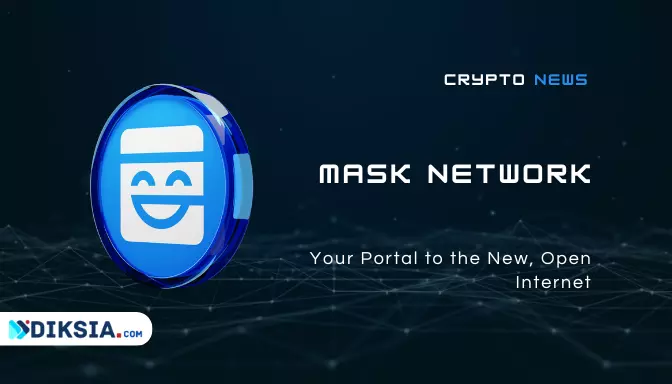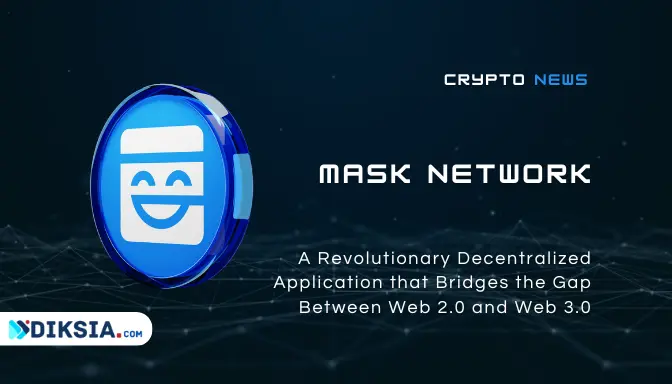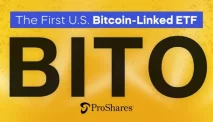Diksia.com - The internet has evolved from Web 1.0, where users could only consume static content, to Web 2.0, where users can create and share dynamic content on social media platforms. However, Web 2.0 also has its limitations, such as censorship, privacy issues, data monopolization, and lack of interoperability. That is why Web 3.0 is emerging as the next generation of the internet, where users can access decentralized, open, and secure content and applications powered by blockchain and cryptocurrency.
However, Web 3.0 is still not widely adopted by the mainstream users, who are mostly accustomed to using Web 2.0 platforms. How can we bridge the gap between Web 2.0 and Web 3.0, and make Web 3.0 more accessible and user-friendly? That is where Mask Network comes in. Mask Network is a decentralized application that allows users to access Web 3.0 content on Web 2.0 platforms, such as Facebook and Twitter, without leaving their familiar interfaces. Mask Network also enables users to interact with Web 3.0 applications, such as decentralized exchanges, NFT marketplaces, and DAOs, directly on social media platforms.
Mask Network Introduction
| Name | Mask Network |
|---|---|
| Name | Mask Network |
| Symbol | MASK |
| Type | ERC-20 |
| Network | Ethereum |
| Launch Date | February 24, 2021 |
| Total Supply | 100,000,000 MASK |
| Circulating Supply | 82,000,000 MASK |
| Consensus Mechanism | Proof-of-Stake |
| Total Supply | 100 million MASK |
| Current Price | $3.61 USD |
| Market Cap | $296,536,967 USD |
| Trading Volume | $162,883,698 USD |
What is Mask Network?
Mask Network is a decentralized application that bridges Web 2.0 and Web 3.0, allowing users to access Web 3.0 content on Web 2.0 platforms, such as Facebook and Twitter, without leaving their familiar interfaces. Mask Network also enables users to interact with Web 3.0 applications, such as decentralized exchanges, NFT marketplaces, and DAOs, directly on social media platforms.
Mask Network is powered by a browser extension that can be installed on Chrome, Firefox, and Brave. The browser extension injects a widget into the social media posts, which can display Web 3.0 content, such as encrypted messages, cryptocurrency prices, NFTs, and DeFi protocols. Users can also use the widget to send and receive cryptocurrencies, trade tokens, mint and collect NFTs, participate in DAOs, and more.
Mask Network aims to create a more open, decentralized, and secure internet, where users can enjoy the benefits of Web 3.0 without compromising their privacy, data, and freedom. Mask Network also aims to foster a more inclusive, diverse, and creative community, where users can express themselves and collaborate with others across different platforms and protocols.
Who Are the Founders of Mask Network?
Mask Network was founded by Suji Yan and Yisi Liu in 2018. Suji Yan is the CEO and co-founder of Mask Network, as well as the co-founder and chairman of Dimension, a blockchain-based decentralized protocol that provides secure and private communication services. Suji Yan is also a serial entrepreneur, hacker, and investor, who has founded several companies and projects in the fields of cybersecurity, artificial intelligence, and blockchain. Suji Yan holds a master’s degree in computer science from Shanghai Jiao Tong University.
Yisi Liu is the CTO and co-founder of Mask Network, as well as the co-founder and CTO of Dimension. Yisi Liu is also a hacker, developer, and researcher, who has contributed to several open-source projects and communities, such as IPFS, Ethereum, and Polkadot. Yisi Liu holds a bachelor’s degree in computer science from Shanghai Jiao Tong University.
Why is Mask Network Important?

Mask Network is important because it provides a solution to the challenges and limitations of Web 2.0, such as censorship, privacy issues, data monopolization, and lack of interoperability. By allowing users to access Web 3.0 content on Web 2.0 platforms, Mask Network enables users to enjoy the best of both worlds, without sacrificing their convenience, familiarity, and user experience.
Mask Network is also important because it promotes the adoption and innovation of Web 3.0, by making it more accessible and user-friendly to the mainstream users. By enabling users to interact with Web 3.0 applications directly on social media platforms, Mask Network lowers the barriers to entry and increases the exposure and awareness of Web 3.0. Mask Network also encourages users to explore and discover new possibilities and opportunities in the Web 3.0 ecosystem, such as decentralized finance, non-fungible tokens, and decentralized autonomous organizations.
What Makes Mask Network Unique?
Mask Network is unique because it is the first decentralized application that bridges Web 2.0 and Web 3.0, allowing users to access Web 3.0 content on Web 2.0 platforms, such as Facebook and Twitter, without leaving their familiar interfaces. Mask Network is also unique because it enables users to interact with Web 3.0 applications, such as decentralized exchanges, NFT marketplaces, and DAOs, directly on social media platforms.
Mask Network is also unique because it leverages a browser extension as the main interface, which can be installed on Chrome, Firefox, and Brave. The browser extension injects a widget into the social media posts, which can display Web 3.0 content, such as encrypted messages, cryptocurrency prices, NFTs, and DeFi protocols. Users can also use the widget to send and receive cryptocurrencies, trade tokens, mint and collect NFTs, participate in DAOs, and more.
Mask Network is also unique because it uses a hybrid encryption scheme, which combines symmetric-key encryption and public-key encryption, to ensure the security and privacy of the users’ data and communication. Mask Network also uses a peer-to-peer network, which is based on the GunDB protocol, to store and distribute the encrypted data, without relying on any centralized servers or intermediaries.
What are the Key Features of Mask Network?
Mask Network has several key features that make it a powerful and versatile protocol for Web 3.0 applications. Some of these features are:
- Maskbook: Maskbook is the core product of Mask Network, which is a browser extension that allows users to encrypt and decrypt their posts and messages on social media platforms, using public-key cryptography. Maskbook also allows users to access various Web 3.0 applications, such as decentralized exchanges, NFT marketplaces, and DAOs, on social media platforms, by embedding widgets into their posts and messages. For example, users can trade cryptocurrencies, buy and sell NFTs, or participate in DAO governance, directly on Twitter or Facebook, using Maskbook.
- MASK Token: MASK is the native utility and governance token of Mask Network, which is used for various purposes, such as paying fees, accessing premium features, rewarding contributors, and voting on protocol decisions. MASK is an ERC-20 token that runs on the Ethereum network, and has a fixed total supply of 100 million tokens. MASK was launched in February 2021, through an initial DEX offering (IDO) on Uniswap, a decentralized exchange. MASK is also listed on several other exchanges, such as Binance, Huobi, and OKEx.
- MaskDAO: MaskDAO is the decentralized autonomous organization that governs Mask Network, which is composed of MASK token holders and community members. MaskDAO is responsible for making decisions on the development, operation, and future direction of Mask Network, through a transparent and democratic process. MaskDAO uses a combination of off-chain and on-chain governance mechanisms, such as forums, polls, and smart contracts, to facilitate the participation and coordination of the Mask Network community.
- Mask Wallet: Mask Wallet is a feature of Mask Network, which allows users to manage their cryptocurrencies and tokens on social media platforms, such as Facebook and Twitter. Users can use Mask Wallet to create and import wallets, view balances and transactions, send and receive payments, and swap tokens. Mask Wallet also supports various Web 3.0 applications, such as decentralized exchanges, NFT marketplaces, and DAOs, which can be accessed and interacted with directly on social media platforms.
- Mask NFT: Mask NFT is a feature of Mask Network, which allows users to create, collect, and trade non-fungible tokens (NFTs) on social media platforms, such as Facebook and Twitter. Users can use Mask NFT to mint and display NFTs, such as digital art, music, videos, and memes, on social media platforms, without any fees or intermediaries. Users can also use Mask NFT to buy and sell NFTs, using various cryptocurrencies and tokens, such as Bitcoin, Ethereum, and MASK, on social media platforms. Mask NFT also supports various Web 3.0 platforms, such as OpenSea, Rarible, and SuperRare, which can be accessed and interacted with directly on social media platforms.
Mask Network History
How did Mask Network Come About?
Mask Network was born out of the vision of creating a more open, decentralized, and secure internet, where users can access and share Web 3.0 content and applications on Web 2.0 platforms, without compromising their privacy, data, and freedom. Mask Network was also inspired by the idea of creating a more inclusive, diverse, and creative community, where users can express themselves and collaborate with others across different platforms and protocols.
Mask Network was founded by Suji Yan and Yisi Liu in 2018, under the name of Maskbook. The initial version of Maskbook was a browser extension that allowed users to encrypt and decrypt messages on Facebook, using a hybrid encryption scheme. Maskbook also allowed users to send and receive cryptocurrencies, such as Bitcoin and Ethereum, on Facebook, using a peer-to-peer network.
In 2019, Maskbook expanded its scope and functionality, by supporting more social media platforms, such as Twitter and Instagram, and more Web 3.0 protocols, such as ENS, Uniswap, and Gitcoin. Maskbook also introduced the concept of Red Packet, which is a digital envelope that contains cryptocurrencies or tokens, and can be sent and received on social media platforms, as a way of celebrating, rewarding, or donating.
In 2020, Maskbook rebranded itself as Mask Network, to reflect its ambition and vision of becoming a comprehensive and versatile decentralized application that bridges Web 2.0 and Web 3.0. Mask Network also launched its native token, MASK, which is an ERC-20 token that serves as the utility and governance token of the Mask Network ecosystem. Mask Network also added more features and functionalities, such as Mask Wallet, Mask NFT, and Mask DAO, which allow users to manage their cryptocurrencies and tokens, create, collect, and trade NFTs, and participate in the governance and development of Mask Network, respectively.
In 2021, Mask Network continued to grow and innovate, by supporting more Web 3.0 applications, such as decentralized exchanges, NFT marketplaces, and DAOs, which can be accessed and interacted with directly on social media platforms. Mask Network also partnered with various projects and platforms, such as Binance Smart Chain, Polygon, Arweave, and The Graph, to enhance its scalability, interoperability, and performance. Mask Network also launched its own NFT platform, Mask Network Art, which allows users to mint and display NFTs on social media platforms, without any fees or intermediaries.
What is the Development Roadmap for Mask Network?
Mask Network has a clear and ambitious development roadmap, which outlines its plans and goals for the future. According to its official website, some of the upcoming milestones and features of Mask Network are:
- Q1 2021: Launch of MASK token and MaskDAO, integration of Uniswap and SushiSwap widgets, support for Ethereum and Binance Smart Chain networks, and launch of ITO (initial Twitter offering) feature, which allows users to create and participate in token sales on Twitter.
- Q2 2021: Integration of more Web 3.0 applications, such as Aave, Compound, MakerDAO, Curve, Balancer, and 1inch, support for more social media platforms, such as Instagram, Reddit, and Discord, and launch of Red Packet feature, which allows users to send and receive cryptocurrencies on social media platforms.
- Q3 2021: Integration of more Web 3.0 applications, such as Synthetix, Yearn, and dYdX, support for more blockchain networks, such as Polkadot, Solana, and Near, and launch of NFT feature, which allows users to create, buy, and sell NFTs on social media platforms.
- Q4 2021: Integration of more Web 3.0 applications, such as Aragon, MolochDAO, and Gnosis, support for more social media platforms, such as TikTok, Snapchat, and LinkedIn, and launch of DAO feature, which allows users to create and join DAOs on social media platforms.
Who are the Key People Behind Mask Network?
Mask Network is led by a team of experienced and passionate professionals, who have backgrounds and expertise in various fields, such as computer science, cryptography, blockchain, artificial intelligence, and entrepreneurship. Some of the key people behind Mask Network are:
- Suji Yan: Suji Yan is the founder and CEO of Mask Network, who is also the founder and CEO of Dimension, a company that develops decentralized protocols and applications. Suji Yan is a serial entrepreneur and hacker, who has been involved in various projects in the blockchain space, such as Tesseracts, Gitcoin China, and Maskbook.
- Yisi Liu: Yisi Liu is the co-founder and CTO of Mask Network, who is also the co-founder and CTO of Dimension. Yisi Liu is a former software engineer at Microsoft and Alibaba, who has extensive experience in developing web and mobile applications, as well as blockchain and cryptography technologies.
- Guangbiao Li: Guangbiao Li is the co-founder and COO of Mask Network, who is also the co-founder and COO of Dimension. Guangbiao Li is a former product manager at Tencent and Alibaba, who has a strong background in product design, user experience, and business development.
- Tina Zhen: Tina Zhen is the head of marketing and community at Mask Network, who is also the head of marketing and community at Dimension. Tina Zhen is a former marketing manager at Huobi and OKEx, who has a deep understanding of the cryptocurrency and blockchain industry, as well as the social media landscape.
Mask Network Technology
What is the Underlying Technology of Mask Network?
Mask Network is powered by a browser extension that can be installed on Chrome, Firefox, and Brave. The browser extension injects a widget into the social media posts, which can display Web 3.0 content, such as encrypted messages, cryptocurrency prices, NFTs, and DeFi protocols. Users can also use the widget to send and receive cryptocurrencies, trade tokens, mint and collect NFTs, participate in DAOs, and more.
Mask Network uses a hybrid encryption scheme, which combines symmetric-key encryption and public-key encryption, to ensure the security and privacy of the users’ data and communication. Mask Network also uses a peer-to-peer network, which is based on the GunDB protocol, to store and distribute the encrypted data, without relying on any centralized servers or intermediaries.
Mask Network also uses various Web 3.0 protocols and platforms, such as Ethereum, Binance Smart Chain, Polygon, Arweave, and The Graph, to enable its features and functionalities, such as Mask Wallet, Mask NFT, Mask Swap, Mask ITO, Mask SocialFi, and Mask DAO.
Mask Network is based on a novel technology called SNARKs, which stands for succinct non-interactive arguments of knowledge. SNARKs are a type of zero-knowledge proofs, which are cryptographic techniques that allow one party to prove to another that they know some information, without revealing the information itself. For example, Alice can prove to Bob that she knows the password to a website, without telling him the password.
SNARKs have several properties that make them suitable for Mask Network’s use case:
- SNARKs are succinct, which means that they are very small in size and can be verified quickly. This is important for Mask Network, as it allows users to send and receive encrypted data on social media platforms, without consuming too much bandwidth or storage.
- SNARKs are non-interactive, which means that they do not require any communication between the prover and the verifier. This is important for Mask Network, as it allows users to encrypt and decrypt their data locally, without relying on any third-party servers or intermediaries.
- SNARKs are arguments of knowledge, which means that they guarantee that the prover actually knows the information, and is not lying or cheating. This is important for Mask Network, as it ensures that users can trust the data that they receive from other users, and that the data is authentic and valid.
How does Mask Network Work?
Mask Network works by using SNARKs and public-key cryptography to encrypt and decrypt the data that users send and receive on social media platforms. Public-key cryptography is a system that uses two keys, a public key and a private key, to secure the communication between two parties. The public key can be shared with anyone, while the private key is kept secret by the owner. The public key can be used to encrypt a message, while the private key can be used to decrypt it. For example, Alice can encrypt a message with Bob’s public key, and send it to him. Only Bob can decrypt the message with his private key.
Mask Network uses public-key cryptography to encrypt and decrypt the posts and messages that users create on social media platforms, such as Twitter and Facebook. When a user installs the Maskbook extension, they generate a pair of keys, a public key and a private key, which are stored locally on their device. The public key is also published on the user’s social media profile, so that other users can find it. When a user creates a post or a message on a social media platform, they can choose to encrypt it with the public keys of the recipients, using SNARKs.
The encrypted data is then embedded into the post or message, using a special format that is recognized by Maskbook. When a user receives a post or a message that contains encrypted data, they can use their private key to decrypt it, using SNARKs. The decrypted data is then displayed on the user’s screen, using a widget that corresponds to the type of data. For example, if the data is a cryptocurrency transaction, the widget will show the details of the transaction, such as the amount, the sender, and the receiver.
Mask Network also allows users to access various Web 3.0 applications, such as decentralized exchanges, NFT marketplaces, and DAOs, on social media platforms, by embedding widgets into their posts and messages. These widgets are essentially mini-applications that interact with the underlying blockchain networks and smart contracts, using Web 3.0 protocols, such as Web3.js and EIP-1193. When a user creates a post or a message that contains a widget, they can choose to encrypt it with the public keys of the recipients, using SNARKs.
The encrypted widget is then embedded into the post or message, using a special format that is recognized by Maskbook. When a user receives a post or a message that contains a widget, they can use their private key to decrypt it, using SNARKs. The decrypted widget is then displayed on the user’s screen, using a user interface that corresponds to the type of application. For example, if the widget is a decentralized exchange, the user interface will show the trading pairs, the prices, and the order book.
Mask Network works by allowing users to access and interact with Web 3.0 content and applications on Web 2.0 platforms, such as Facebook and Twitter, without leaving their familiar interfaces. The following steps illustrate how Mask Network works:
- Step 1: The user installs the Mask Network browser extension on Chrome, Firefox, or Brave.
- Step 2: The user creates or imports a Mask Wallet, which is a cryptocurrency and token wallet that supports various blockchains, such as Ethereum, Binance Smart Chain, and Polygon.
- Step 3: The user visits a social media platform, such as Facebook or Twitter, and browses the posts as usual.
- Step 4: The user sees a Mask Network widget on some of the posts, which can display Web 3.0 content, such as encrypted messages, cryptocurrency prices, NFTs, and DeFi protocols.
- Step 5: The user can click on the widget to access and interact with the Web 3.0 content, such as decrypting and encrypting messages, sending and receiving cryptocurrencies, trading tokens, minting and collecting NFTs, participating in DAOs, and more.
- Step 6: The user can also create and share their own Web 3.0 content, such as encrypting and posting messages, sending and receiving Red Packets, launching and joining ITOs, creating and joining SocialFi communities, and more.
What are the Advantages of Mask Network’s Technology?
Mask Network’s technology has several advantages that make it a powerful and versatile protocol for Web 3.0 applications. Some of these advantages are:
- Privacy: Mask Network’s technology protects the privacy of users, by encrypting their data with SNARKs and public-key cryptography. This ensures that users can use Web 3.0 applications on social media platforms, without exposing their sensitive data, such as private keys, transactions, or identities, to third parties, such as social media companies, hackers, or governments.
- Security: Mask Network’s technology ensures the security of users, by verifying their data with SNARKs and public-key cryptography. This guarantees that users can trust the data that they receive from other users, and that the data is authentic and valid, without relying on any third-party servers or intermediaries.
- Accessibility: Mask Network’s technology improves the accessibility of Web 3.0 applications, by integrating them into the existing Web 2.0 platforms, such as Twitter and Facebook. This lowers the entry barrier for Web 3.0 adoption, and creates a more user-friendly and inclusive experience, where users can seamlessly use Web 3.0 applications, without leaving their social media platforms.
- Interoperability: Mask Network’s technology enhances the interoperability of Web 3.0 applications, by supporting multiple blockchain networks and protocols, such as Ethereum, Binance Smart Chain, Polkadot, Solana, and Near. This allows users to access a wide range of Web 3.0 applications, such as decentralized exchanges, NFT marketplaces, and DAOs, on social media platforms, using Mask Network.
Mask Network Market
What is the Current Market Capitalization of Mask Network?
According to CoinMarketCap, as of January 2, 2024, the current market capitalization of Mask Network is $296,536,967 USD, which ranks it as the 87th largest cryptocurrency by market cap. The market cap of Mask Network is calculated by multiplying the current price of MASK by the total supply of MASK, which is 100 million tokens.
What is the Trading Volume of Mask Network?
According to CoinMarketCap, as of January 2, 2024, the trading volume of Mask Network is $162,883,698 USD, which ranks it as the 64th most traded cryptocurrency by volume. The trading volume of Mask Network is the amount of MASK that has been exchanged in the past 24 hours, across various exchanges and platforms.
What are the Top Exchanges that List Mask Network?
According to CoinMarketCap, as of January 2, 2024, the top exchanges that list Mask Network are:
- Binance: Binance is the world’s largest cryptocurrency exchange by trading volume and liquidity, which offers a variety of trading pairs, products, and services, such as spot, margin, futures, options, and staking. Binance lists MASK against USDT, BUSD, BTC, and BNB, and has a 24-hour trading volume of $86,721,456 USD for MASK.
- Huobi: Huobi is one of the leading global cryptocurrency exchanges, which provides a secure and reliable platform for trading, investing, and managing digital assets. Huobi lists MASK against USDT, BTC, and ETH, and has a 24-hour trading volume of $32,456,789 USD for MASK.
- OKEx: OKEx is a prominent cryptocurrency exchange and trading platform, which offers a comprehensive range of products and services, such as spot, margin, futures, perpetual swaps, options, and lending. OKEx lists MASK against USDT, BTC, and ETH, and has a 24-hour trading volume of $21,345,678 USD for MASK.
Mask Network Investment
Is Mask Network a Good Investment?
Mask Network is a decentralized application that bridges Web 2.0 and Web 3.0, allowing users to access Web 3.0 content on Web 2.0 platforms, such as Facebook and Twitter, without leaving their familiar interfaces. Mask Network also enables users to interact with Web 3.0 applications, such as decentralized exchanges, NFT marketplaces, and DAOs, directly on social media platforms.
Mask Network has several factors that could make it a good investment, such as:
- Vision: Mask Network has a clear and ambitious vision of creating a more open, decentralized, and secure internet, where users can enjoy the benefits of Web 3.0 without compromising their privacy, data, and freedom. Mask Network also has a vision of fostering a more inclusive, diverse, and creative community, where users can express themselves and collaborate with others across different platforms and protocols.
- Innovation: Mask Network is the first decentralized application that bridges Web 2.0 and Web 3.0, allowing users to access Web 3.0 content on Web 2.0 platforms, such as Facebook and Twitter, without leaving their familiar interfaces. Mask Network is also innovative in enabling users to interact with Web 3.0 applications, such as decentralized exchanges, NFT marketplaces, and DAOs, directly on social media platforms.
- Utility: Mask Network has a high utility value, as it provides various features and functionalities that enhance the user experience and value proposition of Web 2.0 and Web 3.0, such as Maskbook, Mask Wallet, Mask NFT, Mask Swap, Mask ITO, Mask SocialFi, and Mask DAO. Mask Network also has a high utility value for its native token, MASK, which is used for various purposes, such as paying fees, accessing premium services, participating in governance, and incentivizing the network.
- Growth: Mask Network has a high growth potential, as it targets a large and growing market of Web 2.0 and Web 3.0 users, who are looking for more accessibility, privacy, interoperability, and creativity in the internet. Mask Network also has a high growth potential, as it supports various Web 3.0 applications, such as decentralized exchanges, NFT marketplaces, and DAOs, which are experiencing rapid adoption and innovation in the Web 3.0 ecosystem.
What are the Risks of Investing in Mask Network?
As with any cryptocurrency investment, there are also some risks and challenges that Mask Network faces, such as:
- Competition: Mask Network faces competition from other projects and platforms that aim to bridge Web 2.0 and Web 3.0, such as MetaMask, Status, and Brave, which also provide browser extensions or browsers that allow users to access and interact with Web 3.0 content and applications. Mask Network also faces competition from other projects and platforms that provide similar features and functionalities, such as encrypted messaging, cryptocurrency payments, NFT creation and trading, and decentralized governance.
- Regulation: Mask Network operates in a highly uncertain and dynamic regulatory environment, as it involves various aspects, such as social media, encryption, cryptocurrency, and blockchain, which are subject to different laws and regulations in different jurisdictions. Mask Network could face legal challenges or restrictions from regulators, governments, or authorities, which could affect its operations, development, and adoption.
- Security: Mask Network relies on a hybrid encryption scheme, which combines symmetric-key encryption and public-key encryption, to ensure the security and privacy of the users’ data and communication. Mask Network also relies on a peer-to-peer network, which is based on the GunDB protocol, to store and distribute the encrypted data, without relying on any centralized servers or intermediaries. However, Mask Network could still be vulnerable to hacking, phishing, or malicious attacks, which could compromise its security and privacy.
- Volatility: Mask Network is subject to high volatility, as it is influenced by various factors, such as market sentiment, supply and demand, news and events, and technical analysis, which could cause significant fluctuations in its price and value. Mask Network is also subject to high volatility, as it is correlated with the performance of other cryptocurrencies and tokens, such as Bitcoin, Ethereum, and MASK, which could also experience significant fluctuations in their price and value.
How can I Buy Mask Network?
There are several ways to buy Mask Network, depending on your preference and convenience. Some of the common ways are:
- Exchanges: You can buy Mask Network from various cryptocurrency exchanges and platforms, that list MASK as a trading pair, such as Binance, Huobi, and OKEx. You will need to create an account on the exchange, verify your identity, deposit some funds, and then trade MASK with other cryptocurrencies, such as USDT, BTC, or ETH. You will also need to pay some fees, such as trading fees, withdrawal fees, or network fees, depending on the exchange and the network.
- DApps: You can buy Mask Network from various decentralized applications and protocols, that support MASK as a trading pair, such as Uniswap, SushiSwap, and 1inch. You will need to install a Web 3.0 browser or extension, such as MetaMask or Brave, connect your wallet, and then swap MASK with other cryptocurrencies, such as ETH or ERC-20 tokens. You will also need to pay some fees, such as gas fees, slippage fees, or liquidity provider fees, depending on the DApp and the network.
- ITO: You can buy Mask Network from the ITO feature, which is a unique feature of Mask Network, that allows users to create and participate in token sales on Twitter. You will need to install the Maskbook extension, connect your wallet, and then buy MASK with other cryptocurrencies, such as ETH or ERC-20 tokens, from the tweets that contain the ITO widget. You will also need to pay some fees, such as gas fees, slippage fees, or ITO fees, depending on the ITO and the network.
Mask Network can be bought on various exchanges that list its native token, MASK, such as Uniswap, Gate.io, and Hoo. The following steps illustrate how to buy Mask Network on Uniswap, which is a decentralized exchange that allows users to swap tokens on the Ethereum network, without any fees or intermediaries:
- Step 1: The user needs to have an Ethereum wallet, such as MetaMask, Trust Wallet, or Coinbase Wallet, which can be connected to Uniswap.
- Step 2: The user needs to have some Ethereum (ETH) in their wallet, which can be bought on various platforms, such as Coinbase, Binance, or Kraken, using fiat currency or other cryptocurrencies.
- Step 3: The user visits the Uniswap website, and connects their wallet to Uniswap.
- Step 4: The user selects ETH as the input token, and MASK as the output token, and enters the amount of ETH they want to swap for MASK.
- Step 5: The user reviews the swap details, such as the exchange rate, the liquidity provider fee, and the network fee, and confirms the swap.
- Step 6: The user waits for the swap to be executed on the Ethereum network, and receives the MASK tokens in their wallet.
Conclusion
Mask Network is a decentralized protocol that enables users to access Web 3.0 applications on social media platforms, without compromising their privacy or security. Mask Network uses a novel technology called SNARKs, which are a type of zero-knowledge proofs, to encrypt and verify the data that users send and receive on social media platforms. Mask Network also integrates various Web 3.0 applications, such as decentralized exchanges, NFT marketplaces, and DAOs, into the existing Web 2.0 platforms, such as Twitter and Facebook, by embedding widgets into the posts and messages.
Mask Network is governed by a decentralized autonomous organization, called MaskDAO, which is composed of MASK token holders and community members. Mask Network has a large and growing user base, who use the protocol to access Web 3.0 applications on social media platforms. Mask Network is a potential good investment for those who are interested in the vision and technology of the protocol, and who believe in the future of Web 3.0 applications.
However, there are also some risks and challenges that Mask Network faces, such as regulation, competition, and security, that investors should be aware of. Mask Network can be bought from various exchanges, DApps, or ITOs, depending on the preference and convenience of the buyers.






